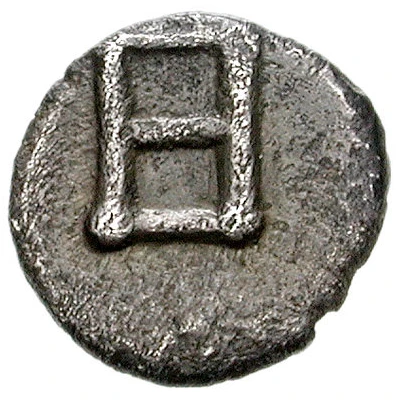


© Classical Numismatic Group, Inc.
Hemiobol 420 BC - 410 BC
| Silver | 0.44 g | 6.0 mm |
| Issuer | Argos (Argolis) |
|---|---|
| Type | Standard circulation coin |
| Years | 420 BC - 410 BC |
| Value | Hemiobol (1⁄12) |
| Currency | Drachm |
| Composition | Silver |
| Weight | 0.44 g |
| Diameter | 6.0 mm |
| Shape | Round (irregular) |
| Technique | Hammered, Incuse |
| Demonetized | Yes |
| Updated | 2024-10-09 |
| Numista | N#144579 |
|---|---|
| Rarity index | 100% |
Reverse
Corinthian helmet facing right within incuse square
Interesting fact
The Hemiobol coin from Argos (Argolis) was used as a form of currency in ancient Greece, specifically in the city of Argos, during the 5th century BC. It was made of silver and weighed approximately 0.44 grams. One interesting fact about this coin is that it features an image of a mythical creature called a "griffin" on one side, while the other side bears the image of a Pegasus, a winged horse. The griffin was a symbol of protection and strength in ancient Greek mythology, while the Pegasus represented the city of Argos and its connection to the goddess Athena. This coin is a unique representation of the art, mythology, and culture of ancient Greece during that time period.



